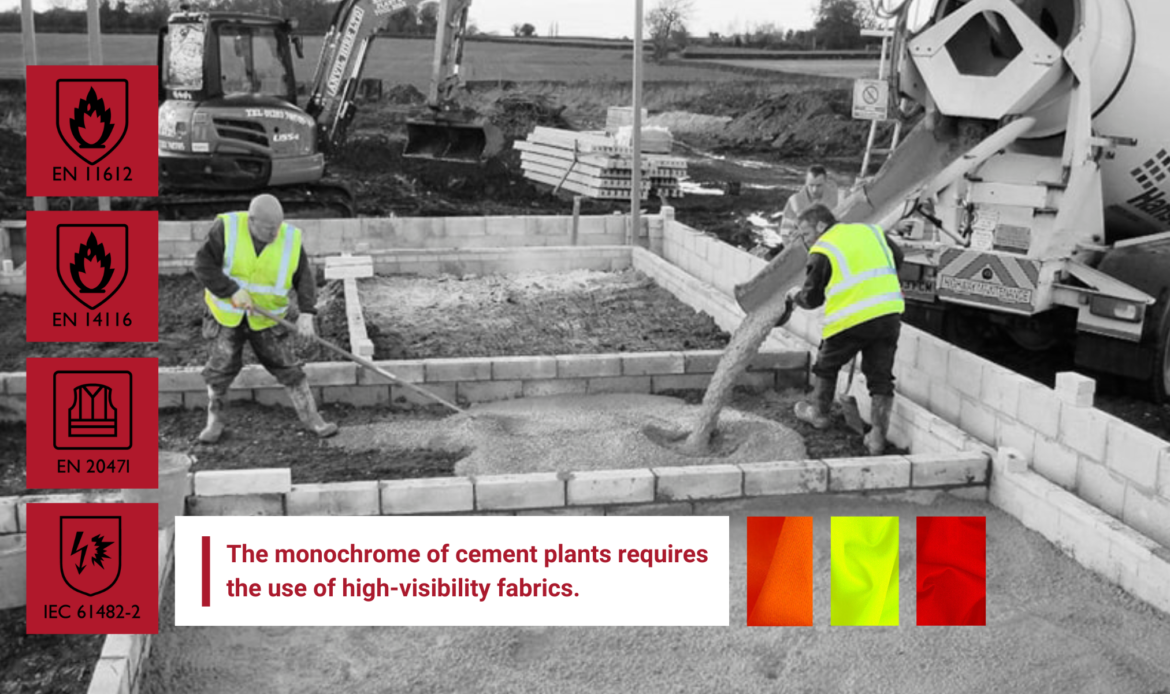WHAT ARE THE RISKS AT CEMENT PLANTS?

Most of the work in cement plants is carried out in monochrome areas (a combination of the same color scale with the different shades within an environment or setting), and it is for this reason that high visibility fabrics (EN ISO 20471) are mandatory. In this way, the workers can be seen easily since they are wearing garments with colors that contrast with the real environment. In this sector, gray is usually the most recurrent.
Within this standard, there are different categories depending on the visibility needs required. Category 1 could only be achieved with the incorporation of reflective ribbons, while category 3 practically occupies the entire surface of the garment (both the jacket and pants).
On the other hand, manufacturing plants are considered ATEX zones, where there are possibilities of an electric arc; for this reason, using antistatic and fireproof fabrics will help protect the worker from this risk.
Lastly, in rotary kiln areas where crude is boiled (1,500°C) or cement kilns that are cleaned through openings where the temperature can reach up to 800°C, the radiant heat is quite intense and there is a risk of splashes of molten cement.
At Marina Textile, we develop specific protection products for each of these areas. Our objective is to ensure that workers are comfortable doing their work.
Below, you can see two flame-retardant technical fabrics that we have developed to offer a solution to each type of risk within the industry.

Deprecated: implode(): Passing null to parameter #1 ($separator) of type array|string is deprecated in /var/www/vhosts/marinatechnicaltextiles.com/httpdocs/wp-includes/category-template.php on line 1377
Tagged atex zonescement plantsfabricsprotectionrisksrotary kiln



